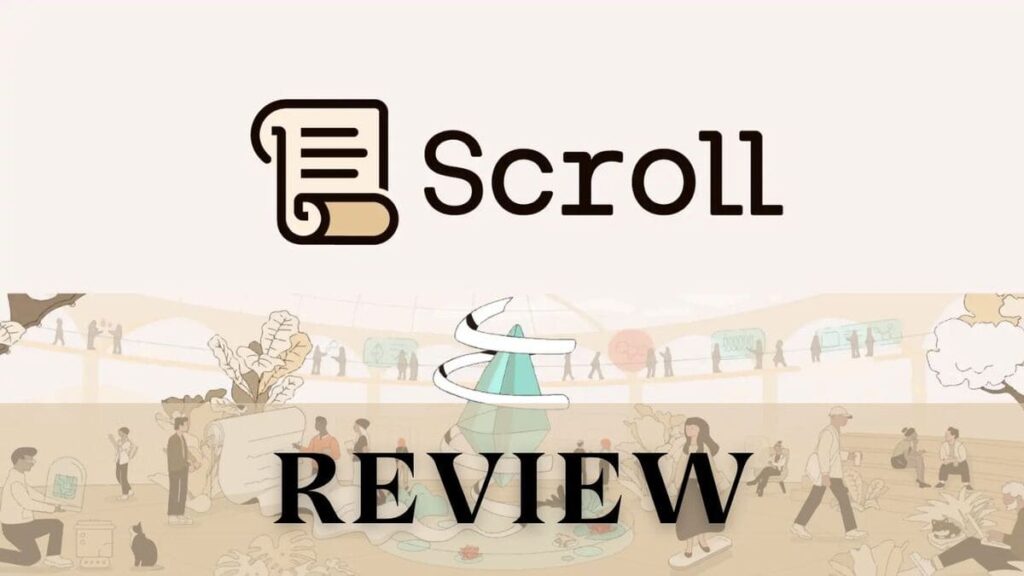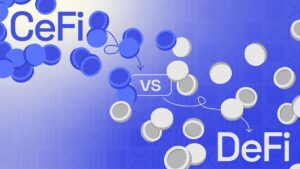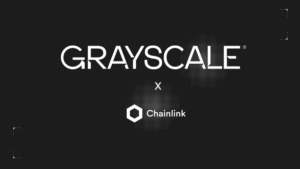In recent years, Ethereum’s scalability has been one of the most debated topics within the blockchain ecosystem. Its network has faced issues of high congestion and elevated transaction fees, especially when subjected to high demand. One of the latest proposals to tackle this problem is Scroll, a blockchain with interesting tools to improve efficiency and reduce costs.
What is Scroll?
Scroll is a Layer 2 (L2) blockchain built on the Ethereum network, designed to improve scalability and efficiency through the implementation of zk-rollups. This scalability solution, operating off-chain from Ethereum’s main network, allows for faster and more cost-effective transaction processing, alleviating the load on the main chain and reducing transaction fees.
Its adoption of the zkEVM (Zero-Knowledge Ethereum Virtual Machine) concept gives it full compatibility with the Ethereum Virtual Machine (EVM). Thanks to this feature, Scroll can run decentralized applications (dApps) designed for Ethereum without developers having to modify the base code. This bytecode compatibility makes it easier for projects to migrate from ETH to SCR, ensuring a smooth transition for developers already familiar with the ETH environment.
zkEVM AND zk-Rollups: The Heart of Scalability in Scroll
The cornerstone of Scroll is its use of zkEVM, an advanced implementation of zk-rollups that not only enhances Ethereum’s scalability but also maintains full compatibility with the EVM. This means that developers can deploy smart contracts using any EVM-compatible language without needing to learn new languages or adapt their code. This flexibility removes the technical barriers that often exist in other solutions, which frequently require specialized programming languages and more complex processes.

How is Scroll’s Architecture Composed?
Scroll’s architecture is composed of several interconnected elements that enable it to function as a zk-rollup solution on Ethereum. Below, we will explore each of these components in detail:
- Scroll Nodes: The SCR network is based on three main types of nodes that manage transactions and communication with the Ethereum chain. These are:
- Sequencer: The node responsible for organizing incoming transactions, forming them into blocks, and ordering them chronologically. It ensures that transactions are processed efficiently and consistently.
- Coordinator: Its task is to coordinate the flow of data within the network, ensuring that the generated blocks are valid and meet the established security requirements. Additionally, it verifies that the Rollers generate the corresponding validity proofs.
- Relayer: Facilitates communication between the SCR network and the ETH main chain. Its function is to transfer processed blocks from Scroll to Ethereum, where they are stored and validated on Layer 1. This process ensures that all transactions are correctly committed and available on the Ethereum blockchain.
- Roller Network: Rollers are specialized nodes responsible for generating validity proofs (zero-knowledge proofs) for each block processed on the network. This is one of the key features of zk-rollups, as it allows verifying that all transactions within the block are valid without needing to execute the full code on Ethereum’s chain.What distinguishes the Rollers in Scroll is their ability to generate these proofs in parallel, which greatly improves efficiency and reduces the time needed to confirm transactions. This parallelization is crucial as it enables handling a larger volume of transactions without compromising validation speed.
- Rollup and Bridge Contract: Rollup and Bridge smart contracts are essential to ensure that transaction data processed by Scroll is available and accessible from the ETH chain. These contracts allow processed blocks by SCR to be “published” on the Ethereum blockchain, ensuring that the state of the SCR network is correctly reflected on Layer 1.
- Rollup Contract: Verifies the validity of blocks generated by the Scroll network, ensuring that the validity proofs from the Rollers are correct. It is also responsible for updating Ethereum’s data state based on changes made by SCR.
- Bridge Contract: Its function is to facilitate bi-directional communication between the two chains. Users can move assets between Ethereum and Scroll through this contract, ensuring interoperability between both networks.

Scroll Token (SCR): Role, Utility and Relevance
The SCR token plays a crucial role, not only as an incentive tool for network participation but also as a mechanism to ensure efficient and decentralized operation. Let’s explore how this cryptocurrency integrates within the network architecture and the advantages it offers to users and developers.
It is primarily used for two purposes: participation in the decentralized governance of the network and as a medium to pay transaction fees within the ecosystem.
- Decentralized Governance: SCR token holders have a voice in decisions affecting the future of the network. This includes everything from protocol updates to decisions regarding fund management within the ecosystem.
- Fee Payments: It facilitates transaction fee payments within the network. Unlike Ethereum networks and other Layer 2 solutions, where users must pay fees in ETH, Scroll allows users to make payments using SCR.
- Incentives: The token is also used to incentivize active participation in the network. Users who provide liquidity, validate transactions, or engage in other activities within Scroll can receive SCR tokens as a reward.

Its Impact on the Ethereum Ecosystem
The implementation of Scroll within the Ethereum ecosystem has the potential to alleviate some of the network’s biggest problems, especially those related to scalability and high costs. Layer 2 solutions like SCR have become increasingly necessary to ensure the blockchain remains operational efficiently and accessibly.
Thanks to Scroll, developers now have a scalability platform that not only improves the user experience but also enables the creation of more complex and feature-rich applications, taking advantage of its greater capacity at scale without the risk of congesting the main network.
Furthermore, it’s worth highlighting that Scroll has attracted a large developer community, as seen in the wide range of projects already being implemented on its testnet. This point is crucial to ensure the long-term sustainability and growth of the platform.
Conclusion
Scroll is a promising solution for Ethereum. Its ability to improve scalability, reduce gas fees, and enhance transaction speed positions it as one of the leading alternatives to address the issues facing Ethereum.
While it still faces fierce competition from solutions like Arbitrum and Optimism, the technical proposition and user experience it offers will give it what it needs to gain a loyal audience committed to taking Ethereum to the next level











